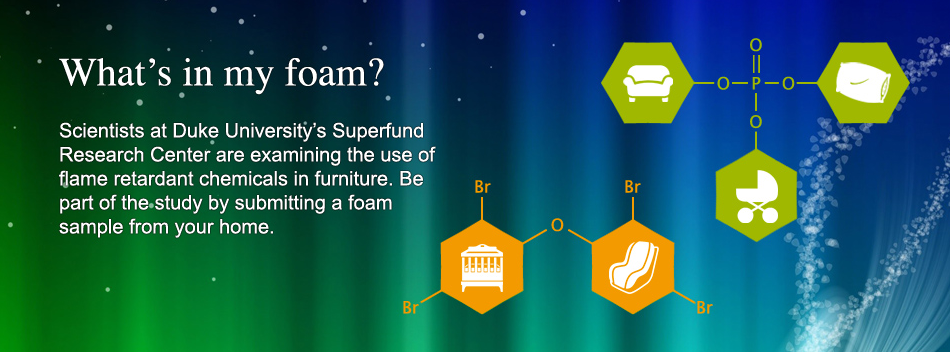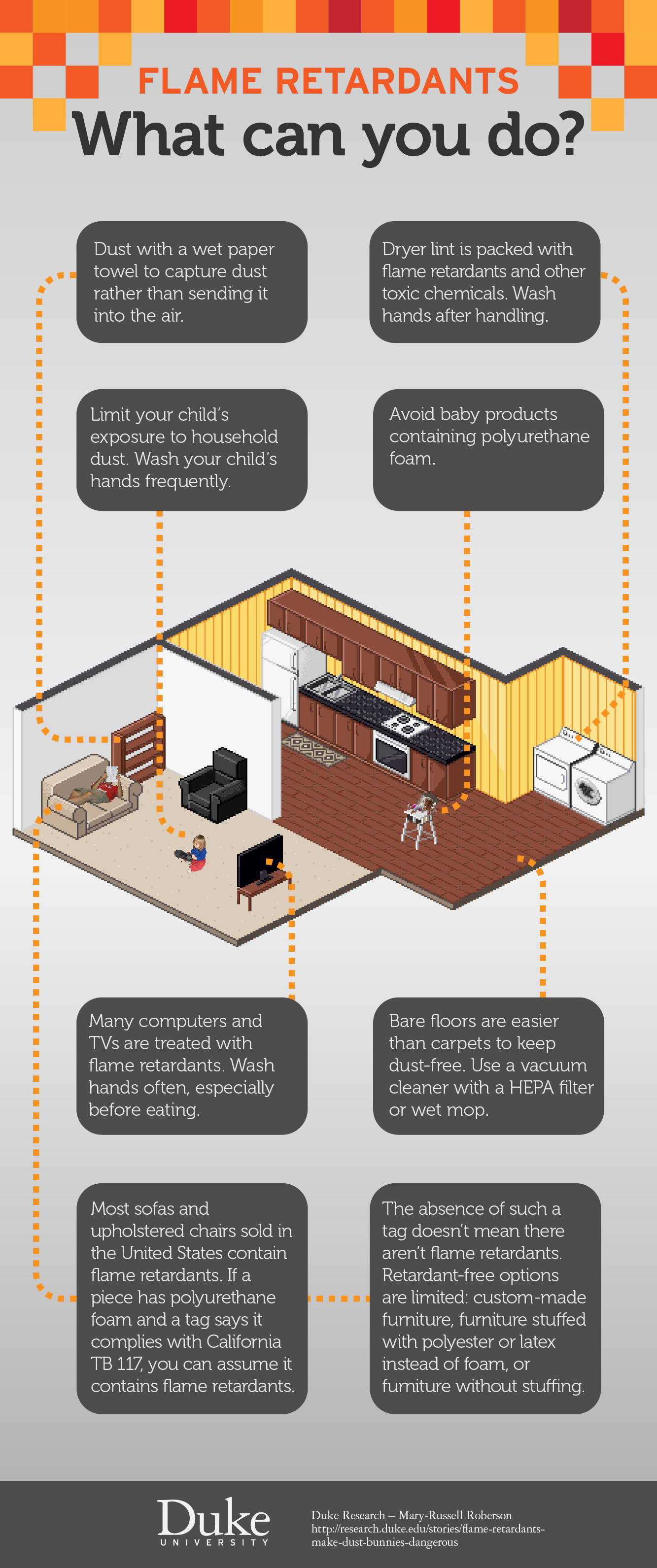
If you pay attention to news sources like the Chicago Tribune and New York Times, you may know that flame retardants have been receiving some publicity. Flame retardants are applied to consumer products (like electronics & furniture) in order to slow the ignition and growth of fire and are used widely in North America, exposing Americans to these chemicals. They are also one of the main types of chemicals being studied by Project 2 (Thyroid Metabolism Disruption in Toxicant-Induced Developmental Impairment) in Duke’s Superfund Research Center. Our laboratory group works to understand how exposure to flame retardants (and other chemicals) affects the endocrine system and human development.
There are several types of flame retardants, but I work with a class of flame retardants called Polybrominated-Diphenyl-Ethers (PBDEs), that were previously used in and applied to many consumer products. In the 2000s, most PBDEs were taken off the market because there were concerns about their persistence in the environment and their toxicity to humans/animals.

PBDEs are interesting because they are structurally very similar to some hormones naturally present in our bodies, called thyroid hormones. This is a problem because when we use products containing PBDEs or coated with PBDEs, they can enter our bodies, and disrupt normal body function. We’ll talk more about the importance of thyroid hormones below.
After exposure to PBDEs, the human liver uses enzymes to metabolize (or break down) the compounds. This metabolism results in new compounds (called metabolites) that are even more structurally similar to thyroid hormones than the original PBDE. This makes the metabolites more likely to “mimic” the naturally occurring thyroid hormones.
Thyroid hormones are important because they coordinate many aspects of human metabolism, growth, and development. This means they are particularly important during pregnancy, which is when a lot of critical fetal development (like brain development) takes place. Thyroid hormones are made by the thyroid gland – a small butterfly shaped gland that is located in our necks.
There are many ways to research flame retardants and their effects on human health, but we use the zebrafish as a model organism to study the effects of these chemicals on early development (see another Duke Superfund blog post Friend Request Accepted Part 4 to learn more about zebrafish!). Zebrafish are a great model because they produce a lot of eggs which are transparent, and so development can be observed easily. Zebrafish embryos also develop rapidly (they go from fertilized egg to free swimming larvae in 3 days), and, most importantly, their biological systems have a lot of overlap with those of humans.
My dissertation research is devoted to understanding how these PBDEs and their metabolites affect development and thyroid regulation in zebrafish. It also will investigate how an early life chemical exposure (similar to an exposure during pregnancy) to these compounds can result in persisting later life effects. If chemical exposure occurs during a critical window of organ development, for instance during brain development, it could alter normal neurodevelopment. We are collaborating with the Neural and Behavioral Toxicity Core to understand how exposing zebrafish embryos to these flame retardant metabolites can result in persisting neurobehavioral impairments in adult life. To study this, I take zebrafish embryos and expose them to a low dose of PBDEs for their first few days of life. Then I leave them alone to grow and mature unexposed to PBDEs, and test them as adults. There a few different tests we can use to look for developmental effects and, so far, we’ve seen evidence of PBDEs’ ability to cause increased fear and anxiety in a behavioral task called the Novel Tank Diving Test, which will be explored in a later blog post by fellow graduate student Anthony Oliveri. Stay tuned!





